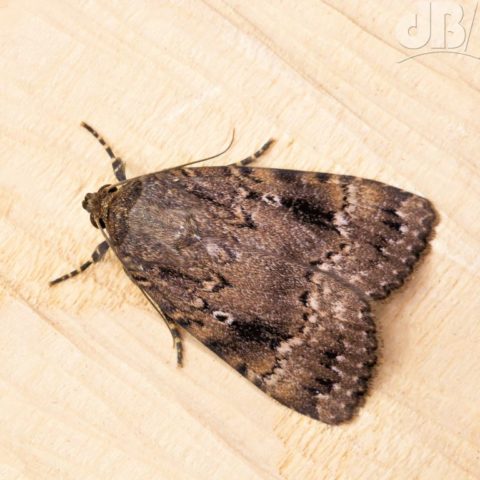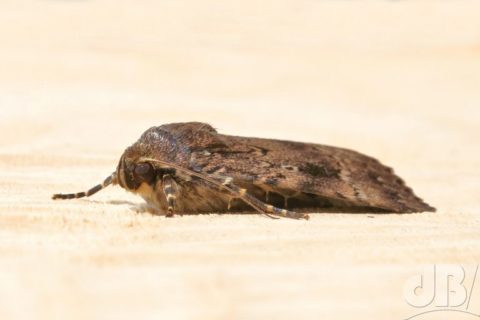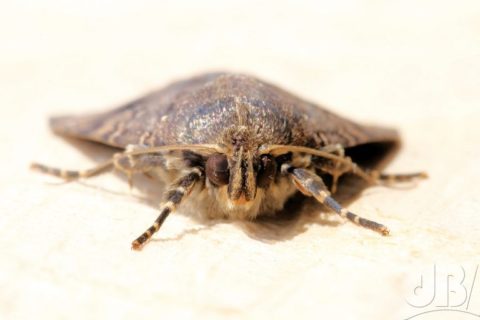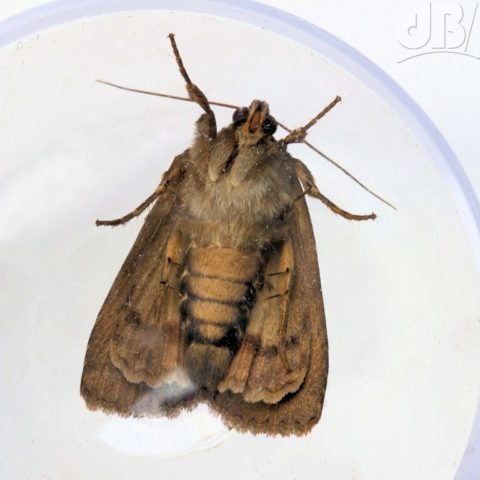As regular readers will know, I borrowed a scientific (albeit home-made) moth trap from my good friend Rob, here in Cottenham on the edge of the Cambridgeshire Fens. He had been telling me about mothing for a while and how he and his kids had been keen back in the day. The trap was lying dormant in his garden workshop.

I had occasionally snapped the odd large moth, a Hummingbird Hawk-moth in France a Pale Tussock in our conservatory, some Cinnabar moths and Six-spot Burnets along footpaths of Aldeburgh and other places. The inspiration came to borrow the trap and have a go at mothing properly on the 23rd July 2018. Mrs Sciencebase spotted a rather large and patterned moth on the warm, west-facing outside wall of the conservatory. It turned out to be a Copper Underwing (Amphipyra pyramidea, Linnaeus, 1758).

I photographed this specimen and then contacted my friend Rob to ask if I could borrow the trap. He set it up for that night and I paid a visit the next morning to see what had come to the actinic ultraviolet light (lots of species!). After we photographed and released those back into the wild, I left with the trap and got ready to set it up in our back garden with its attendant egg trays (they act as nice resting places for the moths that enter the trap where they can roost overnight). Next morning, I had a good haul of Lepidoptera, Ruby Tiger, Burnished Brass, Large Yellow Underwings, and so many more. It got me hooked, although I wasn’t recording the specimens properly at that time. That came early in 2019, with the installation of a new UV bulb and the emergence of the spring moths.

I have been keeping quite fastidious records since and confirming new species of which I couldn’t be sure of an identification via the Flying Tonight UK Moths Facebook Group, the @MothIDUK Twitter (aka Sean Foote), as well as the UK Moths website, and my Collins Complete Guide to British Butterflies and Moths (Sterry, Cleeve, and Read, 2016).

Anyway, night of 17th July 2019 it was balmy and dry. Post-pub, took a look outside to see what kind of activity there might be around the moth trap. Plenty! Including, you guessed it, a Copper Underwing. He brings me full circle with the mothing. Of course, this just represents a punctuation mark, a comma if you will (that’s a butterfly, Polygonia c-album), and I will carry on logging old and new species. Indeed, the final haul on the morning of 18th July 2019 was more than 180 moths of 50+ species. Most of those I have seen several times before.
There were four Elephant Hawk-moth, a Pebble Hook-tip, Brimstone, endless Least Carpet and Garden Carpet, lots of Rose-flounced Tabby, various Yellow Underwings, Bird-cherry Ermine, Thistle Ermine, Buff Ermine, a good crop of Dark Arches, and more. You can see the complete list in that record sheet I mentioned above.
By the, way the labial palps field note for Copper Underwing vs. Svensson’s has been shown to be unreliable, definitive marker is a pale, central patch on the underside of the hindwings of the former as seen above.